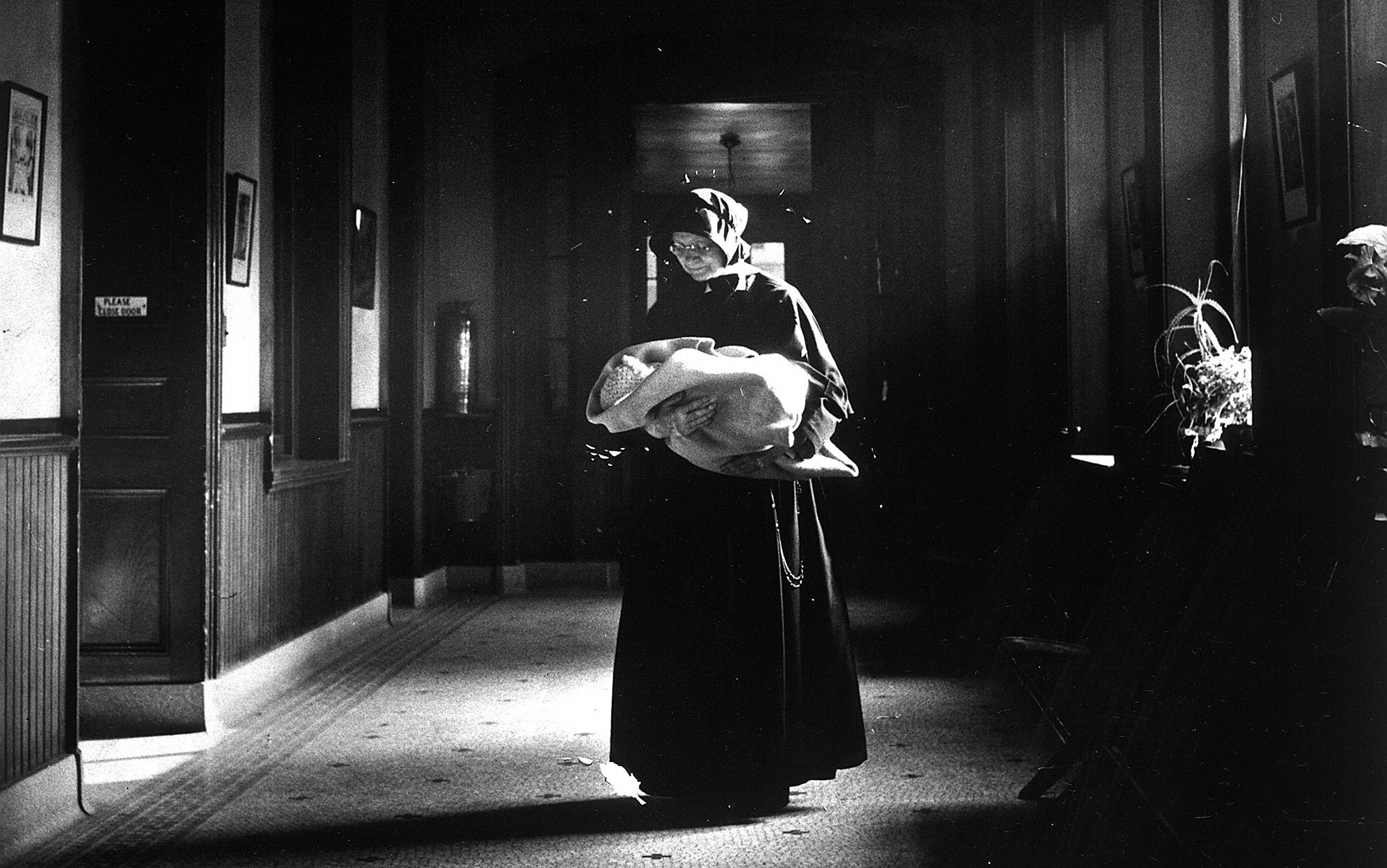by SANDRA NEWMAN
 A Sister of Charity at the New York Foundling Hospital in 1943 PHOTO/Nina Leen/The LIFE Picture Collection/Getty
A Sister of Charity at the New York Foundling Hospital in 1943 PHOTO/Nina Leen/The LIFE Picture Collection/Getty
There is nothing so horrific as child murder, yet it’s ubiquitous in human history. What drives a parent to kill a baby?
If there’s one thing we can still agree on in this era of political polarisation, it is that the life of a child is sacred. A mass shooting, air strike or natural disaster in which children are killed is considered far worse than one that slaughters only adults. When the ethicist Peter Singer suggested that, in theory, a baby’s life might be less worthy of protection than an adult’s because its consciousness is less developed, there were irate calls for him to lose his job. There is – our culture assumes – no love so great as that of a parent for a child, and no crime so unequivocally evil as the murder of an innocent infant. Furthermore, it seems reasonable to suppose that this attitude is genetically determined. What could be a more basic evolutionary imperative than to protect one’s offspring from harm?
The only problem with this simple account is that for most of human history infanticide was a common and accepted method of family planning, and the perceived innocence of children was less likely to win them special care and more likely to make them seem like ideal sacrifices to a bloodthirsty god. Evidence suggests that, while extreme protectiveness of children is hard-wired in the human brain, it exists alongside a predilection for murdering them shortly after they are born.
It is well-known that animals kept in confinement can kill, even devour, their own infants. It is a peril of buying pet hamsters for your child. Here, the common assumption is that the stress of manhandling these solitary, nocturnal creatures drives them to homicidal mania. Zoo animals are also known to kill their offspring, which fits with a model of infanticide as a pathological response to abnormal stress. It turns out, however, that many animals in the wild routinely kill their young, often as a brutally straightforward means of winnowing out the weak. In one study of Norway rats, infant survival was strongly correlated to the success of the parents; low-ranking, scarred female rats ate more than 60 per cent of their young, while high-ranking, unscarred females weaned 100 per cent of their offspring. Parents will also sacrifice babies to save themselves. A mother kangaroo, under pursuit from a predator, will scoop out the joeys from her pouch and throw them into her would-be slayer’s path. Among primates, researchers have witnessed a chilling phenomenon whereby one female steals another’s infant to use as a living doll, sometimes leading to the death of the baby through rough treatment or starvation.
But perhaps the most cynical baby murders are practised by snowy egrets, which typically lay three eggs. In the mother’s body, the third egg gets only half the normal dose of hormones, and is born less aggressive than the others. If food is abundant, the larger nestlings throw their passive sibling out to die; if scarce, they gobble him up. The moral of these stories is not that animals are horrible, but that, in evolutionary terms, some infants are disposable. The evolutionary pressure is not to have the largest number of offspring, but the optimal number of healthy offspring at the optimal time.
Aeon for more
